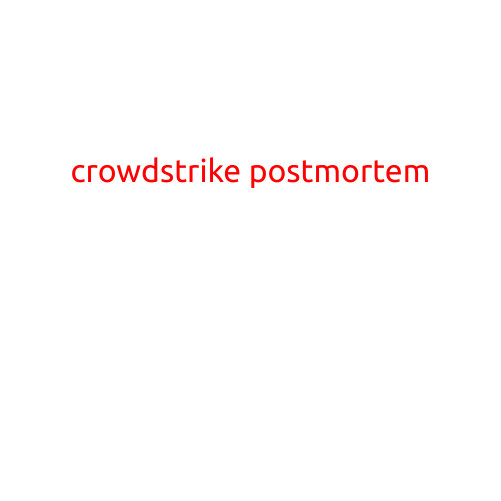
CrowdStrike Postmortem: A Thorough Examination of the 2016 Election Hack
In the summer of 2016, the world was shaken by the revelation that the Democratic National Committee (DNC) had been hacked, and sensitive information had been stolen. The hack, attributed to Russian intelligence officials, was a brazen act of cyber espionage that sent shockwaves through the political and cybersecurity communities. As the stakes continued to rise, CrowdStrike, a leading cybersecurity firm, was contracted by the DNC to investigate the breach and contain the damage.
In this postmortem, we will examine the CrowdStrike investigation, tracing the path of the hackers, analyzing the tactics, techniques, and procedures (TTPs) used, and detailing the lessons learned from the incident.
The Initial Investigation
On June 14, 2016, the DNC notified the FBI of the breach, which was first detected on July 22, 2015. The hackers, believed to be part of Russia’s Main Intelligence Directorate (GRU), had gained access to the DNC’s network using stolen login credentials. CrowdStrike’s investigators were immediately dispatched to the scene to assess the situation and contain the breach.
The M-Triple Threat
CrowdStrike’s analysis revealed that the hackers had employed a combination of three tactics, which they dubbed the “M-Triple Threat”:
- Majeure: A phishing campaign targeting DNC employees, resulting in the theft of credentials.
- Modus Operandi: The attackers exploited vulnerabilities in the DNC’s network, using tools and techniques to move laterally and gain access to sensitive areas.
- Manifestation: The data exfiltration phase, where sensitive information was stolen and uploaded to the hackers’ servers.
CrowdStrike’s Findings
The investigation revealed that the hackers had been present on the DNC’s network for over a year, from July 2015 to April 2016. During this time, they had stolen sensitive information, including opposition research on Donald Trump and other politicians, as well as sensitive information related to the political campaigns.
Lessons Learned
The CrowdStrike postmortem revealed several key takeaways:
- Vulnerabilities are everywhere: The attackers exploited known vulnerabilities in the DNC’s network, highlighting the importance of regular patching and monitoring.
- Credentials are the currency of the digital realm: The hacking began with stolen login credentials, emphasizing the need for robust password management and multi-factor authentication.
- Lateral movement is a major threat: The attackers used tooling and techniques to move laterally within the network, demonstrating the importance of network segmentation and monitoring.
- Speed is key: The investigation showed the importance of rapid response and containment in the face of a breach, highlighting the need for incident response plans and preparedness.
Conclusion
In conclusion, the CrowdStrike postmortem of the 2016 DNC hack provides a comprehensive view of the tactics, techniques, and procedures used by the attackers. The investigation revealed the M-Triple Threat, highlighting the importance of robust cybersecurity practices, including regular patching, strong password management, and network segmentation. As the threat landscape continues to evolve, these lessons learned will remain crucial in protecting against future attacks.





